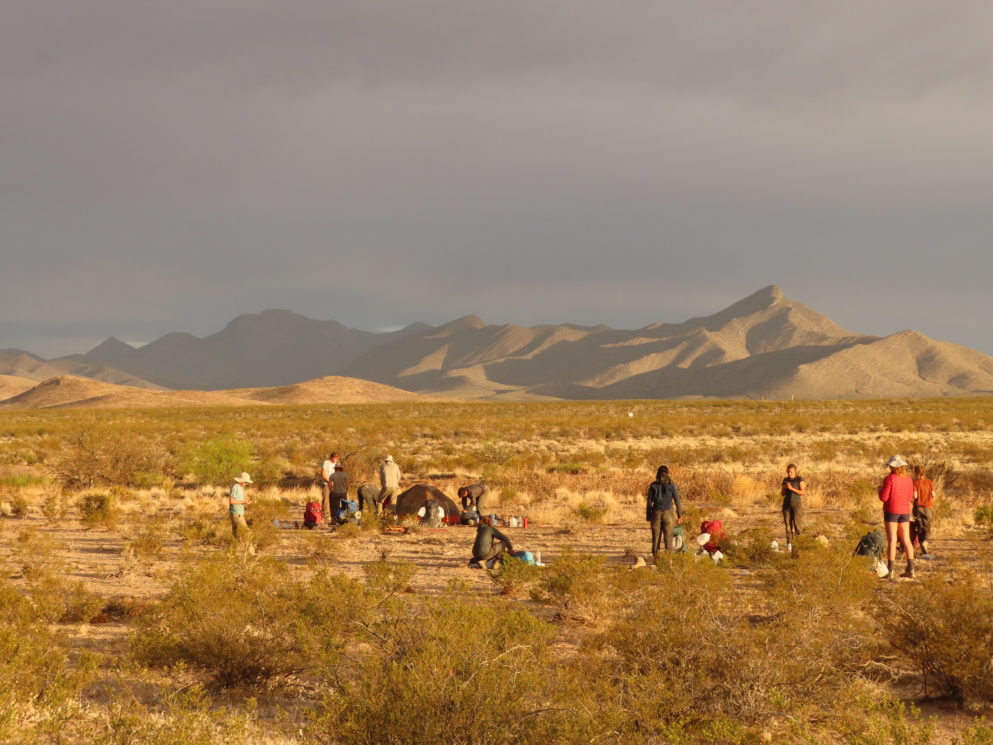Rio Grande Semester, Sample Itinerary
The following is a sample itinerary based on past courses; actual itineraries may vary.
-
WEEK 1: ORIENTATION
We will begin our time together outside of Boulder, CO, ancestral home of the Southern Arapaho people and Where There Be Dragons administrative base. We will spend the first week of the course getting to know one another through activities and time together designed to create a cohesive and healthy group. Simultaneously we will get to know the land that holds us through day hikes and exploration. This will also be where we begin to explore the themes of the land, migration and social justice. -
WEEK 2: SAN LUIS VALLEY, CO
Heading to the San Luis Valley of Southern Colorado, we will spend our days hiking through the valleys and snow capped peaks and our nights camping under the stars. Our backpacking trek will eventually lead us to the headwaters of the Rio Grande. This important waterway will guide our entire program and this will be our introduction. After our trek we will pack up and head south following the river to New Mexico. -
WEEK 3-4: FARM LIFE IN NEW MEXICO
These first two weeks in New Mexico we will base out of an organic farm on the outskirts of the culturally rich town of Taos. We will spend the mornings actively engaged in the life of the farm, working and learning about regenerative agricultural and human systems in this unique and beautiful environment. We will spend our afternoons together learning about the history of the region and its people as well as the forces that have shaped the modern landscape vis-a-vis the Rio Grande river. -
WEEK 5: WILD NEW MEXICO
Leaving the routines of the farm, we explore the New Mexican backcountry by river. Continuing our path along the river, we will set out to float one of the many tributaries of the Rio Grande in this area, exploring the vast and stunning natural spaces of the region. Camping along the way we will learn more about the importance of water in this area and how it has been traditionally managed. We will learn about local plants and wildlife as we float our way through classic southwestern vistas. -
WEEKS 6: TEXAS & THE BORDER
Leaving New Mexico we head to Texas (conditions allowing), a state whose history and present are tied to issues of immigration and identity. We spend this week learning about the annexation of Texas from Mexico and the formation of a border identity. Through art, music and language we experience how the people of the border regions have formed a unique and vibrant culture. We have myriad opportunities to learn about immigration and critically examine the current political rhetoric around this issue. -
WEEK 7: BORDERLANDS IN BIG BEND
Having followed the Rio Grande south, this week will be spent exploring the wild spaces that occupy the US and Mexican border in Big Bend National Park. The Rio Grande here directly forms part of the US border with Mexico and is not only an important natural landmark but a political and national symbol. We hike, camp and paddle through this wild area where the two nations meet. Big Bend is a unique and important wild space where we have the opportunity to learn directly from the land and intermingled histories of the borderland. -
WEEKS 8-9: EXPEDITION PHASE
This portion of the course is dedicated to giving the student group the opportunity to take a leadership role in deciding the group itinerary and activities. We will continue to explore the themes that have driven the course up to this point, however, students will have an active role in deciding how and where the group goes. This could include more time learning about regenerative agriculture through farming, more time trekking in the wilderness, or a combination of activities. -
WEEK 10: TRANSFERENCE
The final week of the program will be spent together as a group reflecting on the experience and the lessons learned. It is a time for gratitude to the land and to the people who have shaped our experience. It is also a critical time for looking forward and planning individual and group next steps for turning our experience into concrete positive action in our home communities and the world at large.

